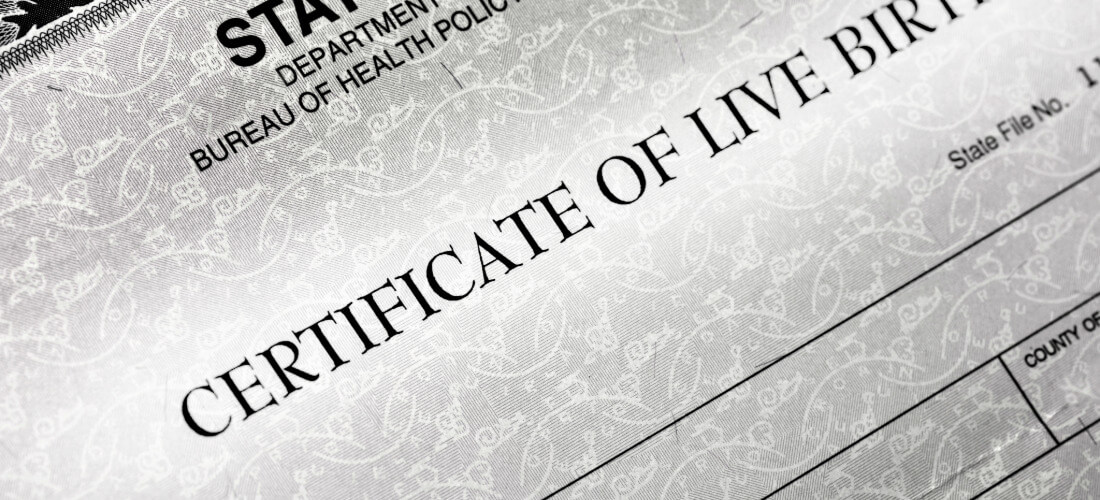
Modern government operations require advanced programs and applications, one of which is vital records software.
Vital records software enables secure access to, retrieval of, and compliance with legal and regulatory requirements; this type of software streamlines the process of tracking, updating, and issuing vital records for government agencies or institutions.
Managing vital records is an intricate and involved process. This type of software facilitates accurate record-keeping, prioritizes quick retrieval, enhances security, complies with legal and regulatory standards, and improves public service by providing timely access to critical information.
Designed to be scalable, easy to use, and most importantly, legally compliant, vital records management software is integral for modern local governments.
This article will explore how it works and the benefits of vital records software.
1. Faster Certification and Registration of Vital Documents
Expediency is arguably the most desirable benefit to constituents looking to retrieve vital documents. Vital records software can reduce processing time from weeks to days by automating tasks previously handled manually. This more streamlined approach expedites data entry, reduces paperwork, and cuts down on the need for physical storage.
Key features, such as distributed data collection and real-time updates, help keep things moving quickly. With real-time searching, instant document generation, and electronic filing, the outcome is faster processing times with equally, if not more, accurate results.
Benefits Between Jurisdictions
Not only is this helpful within local governments, but it also largely benefits timely data sharing between federal, state, and local agencies. Automation promotes better coordination and interdepartmental decision-making, which is particularly valuable in times of crisis.
Additional highlights of faster processing times include:
- Greater efficiency across various jurisdictions. This is a major asset for reducing redundant data entry and paperwork.
- Stronger public safety and security measures.
- Overall greater legal and regulatory compliance.
- More efficient allocation of resources. Having real-time access to data enables all jurisdictions to put their efforts into the areas needed most. It also speeds up disaster response time and delivers the most up-to-date information.
At the core, faster certification and registration allow for greater transparency, accountability, and responsiveness, which translates to a stronger sense of public trust.
2. Enhanced Accessibility for Constituents
Government systems have come a long way in how they handle constituents’ information. Web portals and mobile-friendly solutions simplify access for the public in a multitude of ways.
24/7 Access
First, there’s the ability to access vital records anytime, anywhere. 24/7 access eliminates old barriers of being stalled by government office business hours and wait times. What’s more, with less reliance on human intervention, there’s a lower risk of losing the documents, since they’re stored electronically.
User-Friendly Platforms
Greater accessibility also extends to how easy it is to request records like birth or marriage certificates online. User-friendly interfaces like the GovOS platform are designed for the general public; processes are straightforward, instructions are clear, forms are simple, and step-by-step processes are included. With captcha, SSL certificates, and various other integrated identity verification features to bolster security and compliance, ease of use doesn’t mean sacrificing security.
3. Improved Operational Efficiency and Cost Reduction
 Accessing vital records via government software ends up being a more cost-effective endeavor, particularly for those where transportation is a concern. Getting to and from appointments may mean taking time off work, which could consequently disrupt pay schedules for shift workers.
Accessing vital records via government software ends up being a more cost-effective endeavor, particularly for those where transportation is a concern. Getting to and from appointments may mean taking time off work, which could consequently disrupt pay schedules for shift workers.
Others may not be able to easily take time off to work around government buildings’ open hours. Tack on the cost of gas and/or public transportation, and the price of acquiring one’s vital records suddenly becomes quite expensive.
Moreover, cost savings go both ways. It’s less expensive to not have to mail heavy documents (i.e., shipping costs) for both the government agency as well as the constituent.
Additionally, automating workflows reduces reliance on paper and manual tasks while simultaneously allowing all requests to be tracked in one place. This leaves little room for human error while enhancing overall productivity within government offices.
4. Strengthened Security and Compliance
Despite the omnipresent use of electronic data storage in just about every industry, people may still be wary of it when it comes to vital records in government. How can you trust that your personal information is being handled securely?
Permission Layering
The structured approach of granting access to sensitive information based on roles, responsibilities, and security levels is known as permission layering. This allows only authorized personnel to view or modify vital records.
GovOS configures user rights based on permitted user access. The vital records management software integrates:
- Role-Based Access Control (RBAC)—With RBAC, users are assigned permissions based on their roles within the organization or government (e.g., clerks, supervisors, administrators, etc.).
- Granular Access Control—Here, different levels of access are granted based on how sensitive the records are. For example, birth certificates may have different permissions from death records.
- Multi-Tiered Authorization—Certain actions require multiple approvals. Deleting information may differ from altering vital records.
- Audit Trails—GovOS maintains meticulous system logs to track access and modifications, ensuring accountability, compliance, and integrity are always maintained.
- Encryption and Security Policies—At times, it may be necessary to encrypt sensitive vital records. In these instances, security policies will define who may access pertinent information and under which conditions.
 5. Scalability and Customization for Diverse Needs
5. Scalability and Customization for Diverse Needs
The fifth benefit of using vital records software is scalability. Having a system that is flexible enough to adapt to various certificate formats and requirements makes it universally valuable. Additionally, it’s important that the software can be tailored to meet unique state or county requirements.
Every jurisdiction operates slightly differently, so adaptability and versatility are key. In the same vein, having a scalable vital records software system allows for the same application to be used as record volumes increase.
Looking to the Future of Government Software
As government agencies continue adopting more sophisticated modalities of communication, there will be an increasing need for technology to support these initiatives. Vital records software reduces costs and delays, enhances constituent satisfaction, and improves operational efficiency, benefiting all parties and creating greater interdepartmental harmony.









